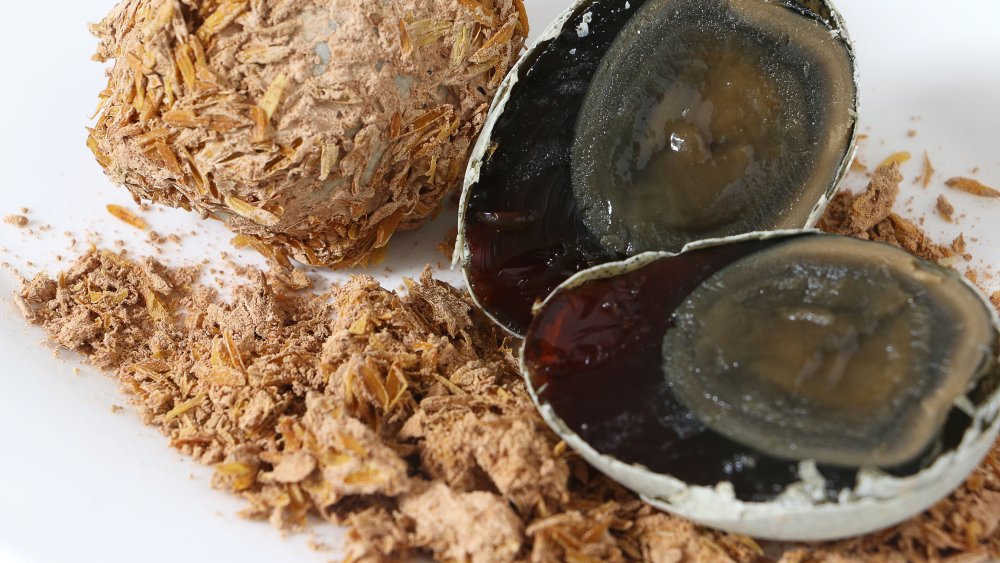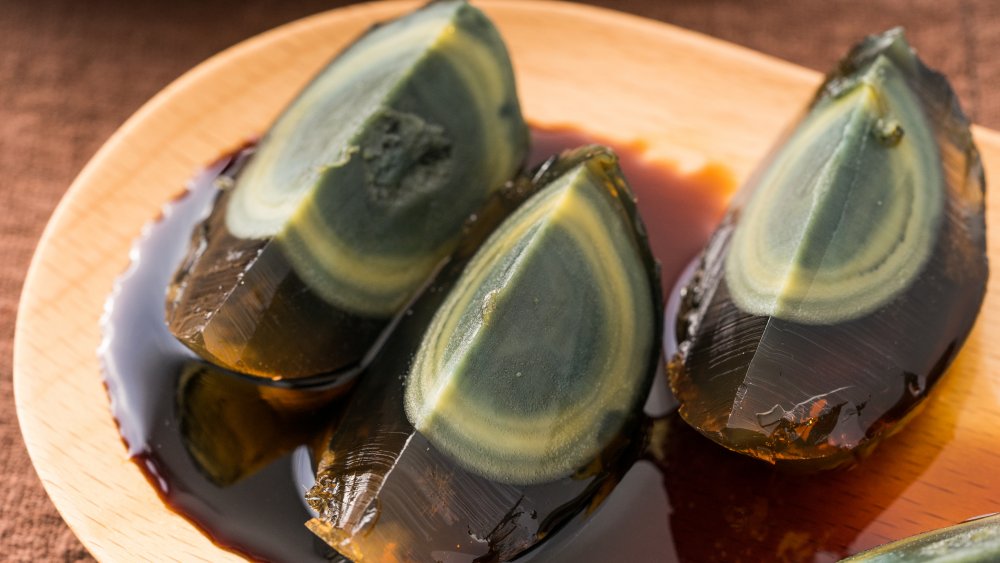What You Should Know Before Eating Century Eggs
Whenever we hear someone talk about century eggs, our thoughts immediately turn to the scene from Charlotte's Web when the Goose, rather sternly, commands Templeton the rat to roll an egg away, but warns, "Be careful – a rotten egg can be a regular stink bomb!" That kind of sums up the smell of this Chinese delicacy, which is made by preserving raw eggs still in the shell and curing them for roughly 100 days before they are ready to eat (via History). The preserving process sounds like a strange science experiment and entails blanketing the uncracked egg – most likely a duck egg – with a solution of wood ash, lime, and salt, along with either clay or rice straw (via ThoughtCo.). If it doesn't sound particularly pretty, it's because it isn't. A writer for The Takeout describes them as "ghastly-looking" and compares them to "dinosaur eggs."
During this preservation process, the egg goes through a metamorphosis of sorts where the eggshell becomes spotted. The egg whites turn amber or a dark shade of brown, and the yolk turns green, taking on what many describe as a creamy texture and taste similar to stinky cheese. Additionally, there's the aforementioned stink bomb smell, which comes from ammonia and sulfur. All of this is a result of the increased pH level of the preserved egg. But are these century eggs edible and do they taste good?
Century eggs are not made with horse urine
There's an old rumor that century eggs are soaked in horse urine, which is thankfully not true (via Taiwan News). So, don't let that deter you from being adventurous and trying this food. ThoughtCo. notes if you buy century eggs in a store – most likely at a specialty or gourmet market – they are going to be made with different ingredients, typically edible sodium hydroxide, AKA lye, and salt. And while it may sound a bit odd to eat anything that is made with lye, the site says that these eggs are still OK to consume. However, always look at the label to ensure your century eggs were not made with lead oxide, which is a common practice. Consuming foods made with lead oxide can be harmful, so look for century eggs made without this ingredient. You can also make your own (via Yum of China).
But what do they taste like and how do you eat them? Surprisingly, or maybe not, you don't cook century eggs. You just wash off the weird layer of clay or rice straw and peel. The Takeout cautions that you don't want to eat these in slices or large bites, which could be overwhelming. Century eggs should be savored in small bites. History notes that thousand-year eggs, which is another name these eggs go by, are frequently served with tofu, porridge, or by themselves with a little bit of pickled ginger root.

